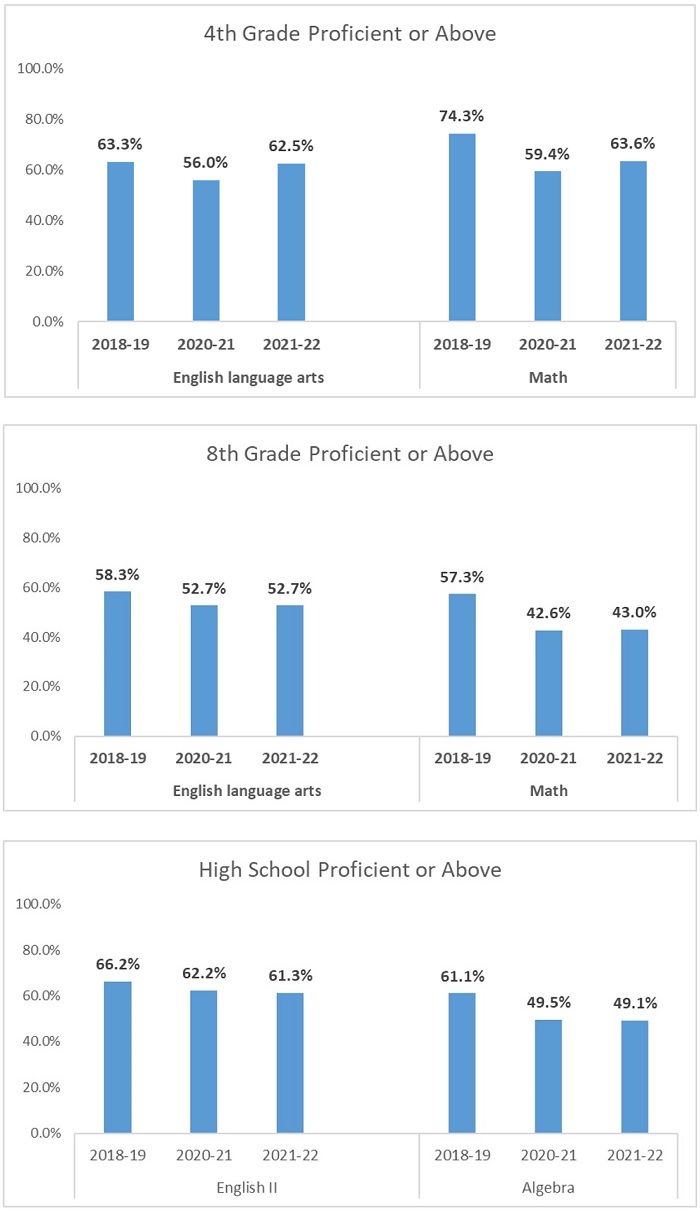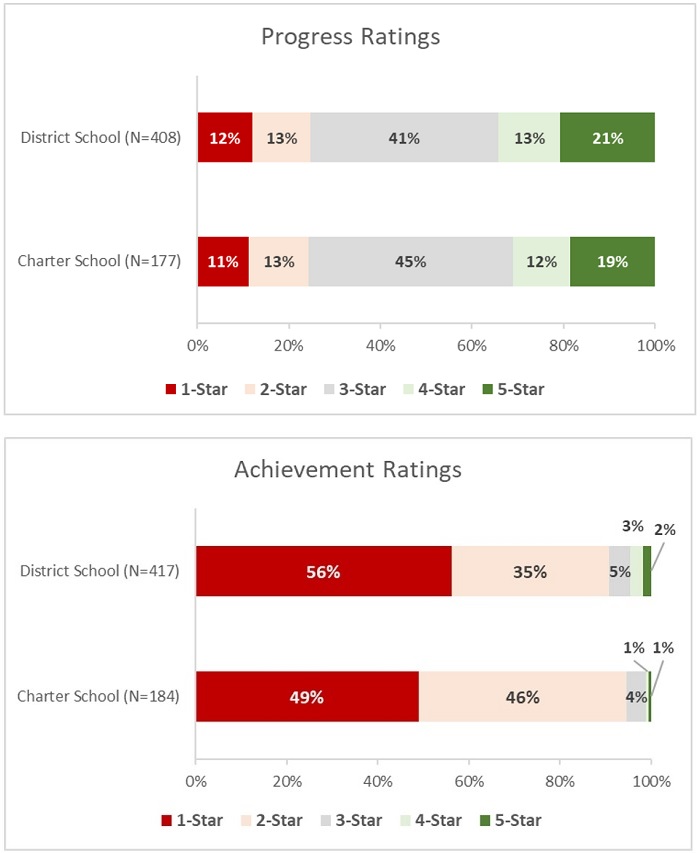Today, the Ohio Department of Education released its annual report cards for the 2021-22 school year. For two decades, report cards have shined a light on pupil achievement and provided parents and communities with an important check on student progress. Following national trends, test scores in Ohio remained below pre-pandemic levels, though some recovery is also evident in this year’s data.
“The pandemic was a catastrophe for many Ohio students,” said Aaron Churchill, Ohio Research Director for the Thomas B. Fordham Institute. “Today’s report cards reveal the ongoing consequences of the pandemic, with more students than usual struggling to meet grade level expectations in math and English.”
The figures below display statewide proficiency rates in selected grades and subjects. Proficiency in math dipped more dramatically during the pandemic, and scores remain well below pre-pandemic levels. While proficiency in English language arts was less affected, scores in this subject also haven’t yet fully recovered.
Figure 1: Statewide proficiency rates in fourth and eighth grade and high school

“Ohio cannot afford to leave tens of thousands of students lacking the basic literacy and numeracy skills needed to succeed in life,” continued Churchill. “State leaders need to set a faster pace for learning recovery—especially in mathematics—by restoring a focus on core academics and ensuring that schools are using highly effective practices.”
* * *
As usual, the report card offers insight into which schools are most effectively moving the achievement needle for students. While Ohio transitioned to a new school report card design this year—including, most visibly, a shift to a five-star system—the Progress rating continues to identify schools where students are making significant academic growth from year-to-year.
In Ohio’s Big Eight cities, 21 percent of urban district schools achieved a five-star Progress rating while 19 percent of public charter schools achieved this mark. Because the Progress rating looks at students’ growth over time (no matter their starting point) high-poverty schools can and do post solid ratings on this measure. Meanwhile, reflecting longstanding achievement gaps and the disproportionate impact of the pandemic on Ohio’s urban students, the vast majority of Big Eight schools struggled on the proficiency-based Achievement component.
Figure 2: Distribution of schools’ Progress and Achievement ratings in the Ohio Big Eight cities

“Student achievement remains stubbornly low in Ohio’s urban communities, and it was clearly made worse by the pandemic,” said Churchill “But as these report cards indicate, there are strong public schools—both district and charter—that are helping students make academic progress from one year to the next. The state needs far more schools like these to ensure that all Ohio children reach their full potential.”

